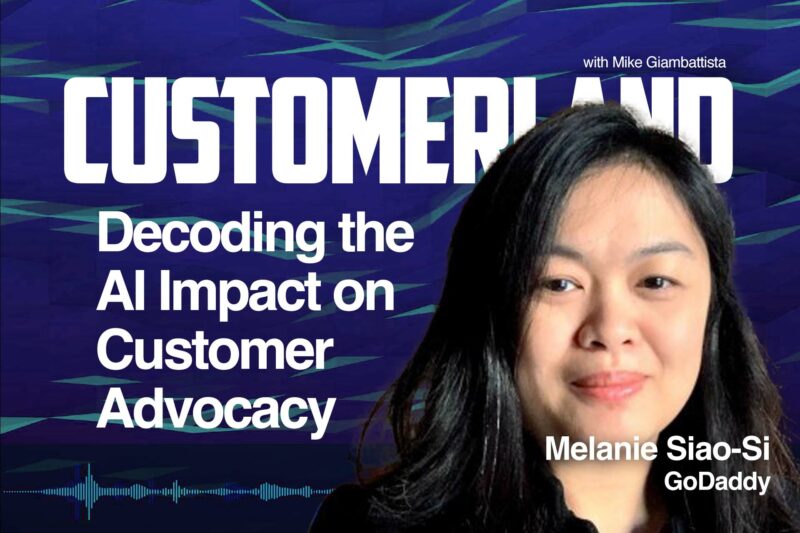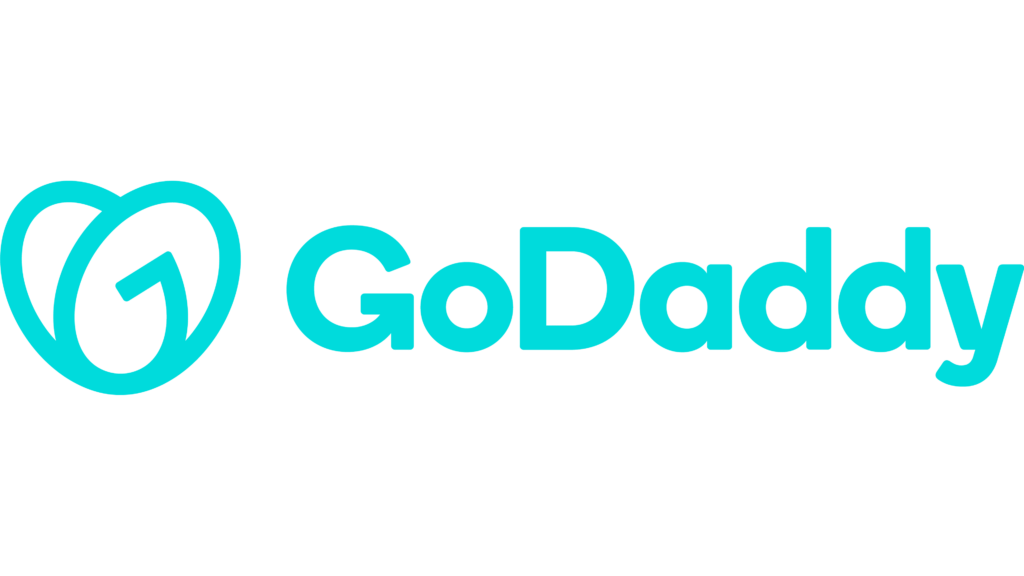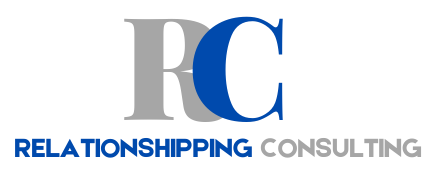Ever wondered how AI could revolutionize customer experience? Get ready to be enlightened by our guest, Mel Si, GoDaddy’s Vice President of International Care and Services. Mel provides a fascinating look into the inner workings of GoDaddy’s global network of over 5,400 customer advocates spanning 55 countries and 17 languages. We delve deep into how AI is transforming customer service, enhancing customer experiences, and reducing resolution times. The conversation explores how AI technology is opening up never-before-seen opportunities to meet and even exceed customer’s expectations.
In the second part of our chat, Mel shines a light on how GoDaddy has harnessed AI to overhaul their customer service strategies. From navigating the complexities of the customer engagement ecosystem to the trials and triumphs of integrating AI-based technologies, Mel’s insights are a treasure trove of useful information. We also discuss how to set the right goals, experiment effectively, and pick the most suitable AI solution for your business. If you’re looking to up the ante on your customer service game and thinking about incorporating AI, then this is one episode you can’t afford to miss.
This episode of Customerland is sponsored by
Full Transcript Below
Mike Giambattista
Today I’m honored and grateful to be talking to Mel Si, who is Vice President of International Care and Services at GoDaddy, which is a monster title with an awful lot of responsibility, because, I understand it, it’s a global remit, which is an awful lot of stuff. So first, thanks, Mel, I really appreciate your taking time to do this. And then, secondly, maybe you could kind of elaborate on what it is you do at GoDaddy.
Melanie Siao Si
Absolutely, Mike. No, first of all, thank you for having me here. It’s a pleasure to spend this time with you. Like you said, I am vice president of care and services international here at GoDaddy. In simple terms, what I really do is I lead the international care organization here and I am based in London, united Kingdom. So it’s a nice sunny, all of a sudden afternoon here. I have been in this space, in the customer care and customer experience space, for about 20 years now, so I’m really dating myself there.
Mike Giambattista
Well, just for context, this is a podcast, so there’s no video here, but Mel appears to be about 25 years old maximum, so I don’t know how that really worked.
Melanie Siao Si
I appreciate it. Maybe it’s all the Zoom filters, right, right, but I definitely don’t feel 25 for sure. I wish I could go back there. But in those 20 years I really just been putting myself in the shoes of customers and really in various leadership roles across different organizations, industries, heck, geographies, I guess. And then along the way I’ve built and have been still building and leading teams across the world, and it’s been a world of fun, I should say, leading international teams.
Mike Giambattista
I am sure of it In terms of the functions that you oversee. As I understand it and I’m probably going to butcher this, but it’s my limited understanding and I’ll rely on you to correct all this but it’s customer care functions, but it’s also the systems that support those functions, which could include BPO’s. It could include everybody technologically.
Melanie Siao Si
Correct all the cross functional partners and functions within GoDaddy or through partners that support our customers across the world, and those are done in different languages. And, to give you a little bit of a scale, our care team just holistically here at GoDaddy spans about really about in 55 countries and 17 languages and it’s a compulsive about 5,400 guides, who are just amazing relentless advocates of customer success and that customer success varies across the different markets that we are in.
Mike Giambattista
So I’m really interested and I hope we can get into this in this conversation. But I’m really interested in how you and GoDaddy are managing customer expectations, because they vary according to use case and whichever channel you’re on, and certainly, I would guess, by my culture. But and I have to ask, we have to get there somehow in this conversation. But AI seems to be the perfect kind of built tool for those kinds of use cases and, without giving away GoDaddy’s secret sauce, maybe you could talk a little bit about how GoDaddy is deploying AI and, you know, is it the solution? Is it the thing we’ve all been waiting for so we can retire to the beach in south of France and let the AI do the work for us, or is there some other way we should be thinking about this?
Melanie Siao Si
Yeah, I think I’ll answer your questions different ways. So first is, how are we meeting customers? So that’s kind of like the keyword here. We meet customers where they want to be served and how they want to be served in the channel of their choice, and or channels of their choice, for that matter. So, whether it’s in voice or in messaging or it’s AI powered bots, we’re there for them essentially. So for the question to the question of, of AI and how GoDaddy kind of uses that, we really use that to the benefit of our customers. Right, and people were asking me what do you think the future is with AI? I’m like I think the future is exciting.
Mike Giambattista
Me neither too.
Melanie Siao Si
Because really, we look at here I look at it specifically as AI unlocks so many possibilities to elevate customer experience. Whether it’s increasing CSAT or improving product fit through AI powered, next best action or simply reducing time to resolution, all of it is now possible at an accelerated level because of AI, and I think the possibilities there are quite vast. And, additionally, it is an exciting time to be a customer. We are all customers. I look at it from both lens right From a kind of a customer experience customer care executive, but also from being a customer. It’s an exciting time to be a customer. Ai introduces an advanced level of self-help capability that we’ve never really been able to do before at an accelerated pace.
Mike Giambattista
Yeah, yeah, so in my position I talked to a lot of CX executives, executives, people who are designing programs and systems at a fairly large scale and it’s interesting to me that the kind of change in the language of AI and how people are thinking about as it relates to CX because I think there was I’m going to say this is a year ago more or less you bring up the idea of AI and CX and it was just kind of like, yeah, we can do that, we have certain AI functions that we’re using. And then there was this, I’m going to just say, a news cycle where everybody became afraid of AI. It was too scary to address in the media. People just didn’t want to talk about all the. Everybody kind of knew about it. But I feel like there’s been a really quick understanding of the incredible potential that those technologies can offer.
And I don’t know if you saw that in your world kind of that wave of enthusiasm, and then you know, and all of a sudden, everybody’s kind of like anxious about it.
Melanie Siao Si
I totally saw that and I continue to see it actually and talking to my peers in different industries, and I think part of it is kind of as human beings and like professionals in this space not able to quickly articulate in our own minds and then obviously, by extension, to our teams around hey, what challenges and what benefits can we actually look forward to?
Right, and I’ll say very quickly what’s happening as folks are realizing that it’s, you know, it’s natural to when new disruptive technology is introduced. It might be scary and unsettling maybe at first, but very quickly what’s happening is it’s becoming exciting because the technology is now creating more and newer opportunities to learn new skills and a different way of working, and so I think folks took a little bit time to actually recognize that and be okay with a different way of working. And for customer service professionals, ai enabled interactions is just super powerful for both the professional and the customer. Right, like here at GoDaddy, we really use AI to elevate the guidance we provide our customers. And, you know, from a practical, pragmatic business standpoint, included in some of these benefits is, you know, the optimization that we can find as AI accelerates our competitive edge and reinvest in the business.
Mike Giambattista
If you don’t mind getting a little bit deep into the weeds on some of those topics. You know specifically how GoDaddy is deploying AI, and we don’t need to make this all about AI, by the way, because I’m super interested in the way you approach CX and customer success as a leader, and you’ve already mentioned some of what I’m guessing are some of the key pillars you focus on, which is meeting the customer where they are, where the channels that they want to be engaged in, when they want to be engaged in them. But there’s also a huge component of trying to anticipate their needs, understand, through sentiment analysis, what they’re really feeling about the conversation and challenges they’re facing and because oftentimes, as you know, it doesn’t come out in the words, more often it comes out in other ways.
Melanie Siao Si
Contextual things, and that’s definitely one of the challenges, right? So, yes, there’s benefits, but also recognizing there’s challenges and it’s beyond kind of like you know, the new ones of human AI learning, the new ones of human interaction and even the bot’s ability to drive brand loyalty that those two things are, I think, very, very tricky, right, there’s a lot of executives who’d say, oh, it’s very scary because there’s, you know, some obvious challenges to data security and privacy. Yes, but that solves itself, right, and actually, frankly, I think that the industry’s actively solving that. What I am very, very curious about is really how do we kind of untap that ability you know, the AI enabled interactions ability then to anticipate needs, right, and almost read the context, the subcontext of what you know what a customer is meaning or wanting to say, right, whether it’s in text or even in voice.
Mike Giambattista
Yeah, I’ve had some fascinating conversations with other folks in your, in your in a similar position about those challenges. But I think that that’s one of that’s one of the reasons why they’re so excited about the potential of AI, because to compile a large language model that has, you know, whatever years’ worth of history built into it, where they’re listening to the cues, the subtle changes in tone and language and volume, and all of a sudden you start to build a picture around what this person is really dealing with emotionally and you can you can guide conversations accordingly. So I’m super interested to see if GoDaddy is actually there yet or if that’s a place you’re tracking towards.
Melanie Siao Si
Tracking towards is the answer right.
Mike Giambattista
Okay, all right.
Melanie Siao Si
Tracking towards, and then you add the complexity. There’s that complexity, but you also add the complexity of culture and language. That is, that’s definitely something that we’re like oh, interesting right. One thing that is kind of like just out there, right, when you go to the GoDaddy website, it’s amazing because we’ve made so much progress in the prompt library, right, it’s a very practical tool for a lot of entrepreneurs around the world in English right, where they can go to this resource right in the prompt library and just kind of ask for help, right, and it’s democratizing this tool for help as an entrepreneur on. Okay, I need to name my business. This is my idea. I need to. I need some help with digital marketing or even content creation. It’s all out there now. So, and that’s really rooted upon when we created this prompt library. I remember the conversations internally on this before we released it to the public. It’s just really, it’s fascinating how it’s so rooted upon.
What is top of mind for a small business owner that time is money, right, and we don’t have as an entrepreneur, you don’t have the luxury of time to kind of, you know, research everything. You just go right, you have this money, you want to invest in it. You have this idea, you just go and everything follows along, and having this tool is just amazing, where not only are you able to name the business, but now, all of a sudden, you can see your future and how you scale it because you have the tools that you need. So that’s kind of like one of those practical things. That to your question, if are we there yet, we’re definitely tracking there. I wish we would be faster. I just like any other company, right?
Sponsor Announcement
I want to take a quick break from the conversation to tell you a story – our story – the story of TheCustomer.
As of the air date for this podcast TheCustomer is officially 4 years old. And if you do the math, that puts our birth date just before the pandemic hit in full. And if you operated in this space at the time, you’ll know that business – at least in our world – came to a screeching halt. And it didn’t really come back to life for another year plus. To say those were difficult months is a giant understatement. They were for a lot of businesses.
But we got lucky.
Right around that same time I was introduced to a person – and his company – that literally transformed this operation and got us on solid footing, on a solid path. I’m happy and proud to say that TheCustomer is now stable and strong. And a lot of that credit goes to a group called Relationshipping Consulting.
Relationshipping is the brainchild of George Weidemann who, if you’re not familiar, is founder, and CEO of one of the largest ad agency conglomerates in the world. His tenure leading the efforts at Time, Inc. and Grey Direct were transformative to say the least and now George and his team are helping organizations across the customer-engagement ecosystem to build healthier businesses and happier shareholders.
I can’t say enough about the effect of those efforts on TheCustomer. Suffice to say – if your business operates in some corner of this big ecosystem, and if you’re looking for a growth partner and strategist, you should really give Relationshipping a shout.
Or reach out to us at TheCustomer and we’ll put you in touch.
Mike Giambattista
So I’m old enough to remember when I first heard about GoDaddy. It was a long time ago and GoDaddy was, I think, just purely a domain registrar at that point. Maybe had some other ancillary services, basically a domain registrar, but it was one of the first, best, biggest of the of that time. And over time the company has morphed. The company has layered in, as you’re saying, many more services geared towards small businesses and entrepreneurs in general, each of which adds a new I was going to say layer of complexity, but I would say layers of complexity for each one of those business lines and they all roll up into you.
Melanie Siao Si
Not quite. We do have product managers that manage those products. What rolls up to me is the support of those products and services, right, and hence we have the 5400 guides around the world that are, you know, super strong and super dedicated to see through the customer’s journey and help them be successful. But, yeah, it is. There’s definitely a lot of complexity and kind of. This is why I’m super excited about AI, right, Because and you know, next best action it’s been there, like there’s different vendors and tools that’s available for next best action, but not in this, in this kind of level, where it is, you know, all-encompassing and it’s actually truly thinking ahead, right, and it’s a proactive tool. So that’s why I’m super excited, because it’s just going to make our guides lives so much simpler and, you know, everybody’s you know, just super excited about it.
Mike Giambattista
Well, kind of makes me want to log on and just have a problem at GoDaddy, just so I can experience it.
Melanie Siao Si
Let’s absolutely do that, yeah.
Mike Giambattista
Can we talk a little bit about the cultural hurdles that you and your organization faces in dealing with customer support? And we touched on this a moment ago. But you know there are, of course, their language differences, but customers in all these different places have different expectations as to what is an appropriate outcome for their inquiry. So how do you gauge that, how do you test for that and how do you manage to that?
Melanie Siao Si
That’s an interesting question and the answer to that question actually varies by market right and how you know how deep we are in that market if it’s an emerging market, if it’s a mature market right or if it’s kind of like an investment market. I will say I’ll go back to my answer earlier around channel of choice, there are actually countries and markets around the world that prefer messaging. When we started internal, like expanding internationally, we insisted on voice, not recognizing right. Voice is a channel of support, not recognizing and all of this we did this kind of like across different languages, not recognizing that. You know what. There are actually countries in Asia, in Europe, that prefer messaging, that prefer WhatsApp, for example, as a channel of choice. Very quickly, what we’ve then done is recognize that and adjust the way we actually serve our customers. So we are in many countries around the world. We’re leading, although voice is still available for those very complex interactions. We’re leading kind of our guides into this channel of choice and we’ve transitioned some of these countries dictated by the customers.
Mike Giambattista
Interesting. Yeah, it’s got to be a complex undertaking.
Melanie Siao Si
It was, it was because a lot of it was actually like decisions like this we don’t take lightly, because there’s implications in customer experience. We don’t know what we don’t know, so this is where testing and experimentation comes in handy, right? So here at GoDaddy, experimenting with new technology, with new kind of channels, for example, is really part of our DNA, and our support teams are very involved in hypothesis formation.
Our guides actively help identify areas where, let’s say, ai or customers are saying can help, or customers are saying I don’t really want to talk to you over the phone, I don’t want to call you, I just want this as a case that you take in and when it’s done and it’s resolved, come back to me right? So what I’m describing there is very much kind of like an async interaction and we haven’t heard that like in my career 10 years ago I didn’t hear that, right. And so that evolution has happened and customers are pushing us there, but at the same time, now that we know, we’re proactively meeting customers there as well. So it’s interesting because the care organization here really we experiment based on what we hear. We’re closest to the customers, right. So, based on what we hear from customers and a lot of the experimentations, if not all, are really grounded on the customers’ needs and what they need and what we need them to do to meet them where, when and how they want to be supported.
Mike Giambattista
Hopefully I’m not asking something that’s not an unanswerable question, but internally you’ve got 5400 guides that are managing these relationships and interactions. What’s it been like to introduce AI-based technologies into their worlds, because I would imagine that they feel kind of proprietary about their worlds. This is what I do, how we interact with and how it works, and you’re giving me something that’s entirely new to work with, which we think we understand to be very beneficial. But were there hurdles to introducing that and to getting it adopted into the system, into the culture?
Melanie Siao Si
Yes, no, I think that’s a great question. I wouldn’t call it hurdles, more like an adjustment, because essentially in the beginning like you go back to our previous conversation around kind of like challenges and the fear of the unknown there’s definitely some of those, but here at GoDaddy we’re very intentional about making sure that we’re educating our team around. This is actually a tool that will help your customers, and so that’s what we’ve been doing. Whether we help customers of the forefront, before they even get to a care guide, or during that conversation where the care guide’s got a question that needs to be escalated to a higher level, then that’s where kind of AI can come in and say this is what you should be looking at, this is how we should be talking to customers about this product, this issue and the resolution therefore. So it’s been a welcome kind of tool for the team.
23:25
Good, Good Well it evolved to be a welcome tool.
Mike Giambattista
I’m sure. I’m sure I mean you know, let’s face it, your 5400 guides are regular people too. They face the same anxieties the rest of us do as it relates to this technology. Well, if I can, I want to ask the same question, but I want to externalize it a little bit, because you have a global perspective on how to meet customers where they are in the best ways. So if you were going to give advice to other CX professionals, other people with a similar remit, on the topic of introducing AI based tools, generative AI, into their tech ecosystem, what takeaways would you give them from your experience?
Melanie Siao Si
Great question. I talk to my peers about this all the time and we share best practices, obviously, but I’d say experiment, so one assuming you already know your customers, test your way into it Right. Make sure that you’re grounded and clear on what is the end game. Is it cost savings? Is it empowering customers? Is it revenue generation? Be very grounded on what you want to accomplish. I think it can be all right, like it can essentially encompass all of those things as a business owner, especially if you’re a PNL holder, right. So if you own a PNL, obviously, look at this holistically. I would encourage executives to look at this holistically and really be grounded on the solutions that you want to be out there for your customers and elevated solutions.
Mike Giambattista
Great advice. I should have written that down myself. But would you say that there is a natural starting point for introducing AI into an organization, or it might not be a valid question, or is there another starting point? I mean, how would you begin that?
Melanie Siao Si
I think so. I think it’s depending on what type of company. If you’re a product led company, then definitely there’s, you know, optimizations that can be found in product releases and even product creation or development. If you are a you know customer in a BPO space, customer service organization, there’s so much opportunity there from a process standpoint, whether it’s content and training, content creation, onboarding, right. There’s so much possibilities that you can look at, depending on the industry. But I do believe that there is a natural starting point depending on the industry and the company.
Mike Giambattista
Great advice. I think that could be and maybe it should be, the topic for a follow up conversation. I think you’re in a unique position in that your perspective is truly global. You have a vast number of customers, of customer types, of cultures and technologies you have to deal with. I think it would be fascinating for me, but I think it’d be really invaluable for our readership and listenership to hear you know just how you navigate that as a CX leader.













